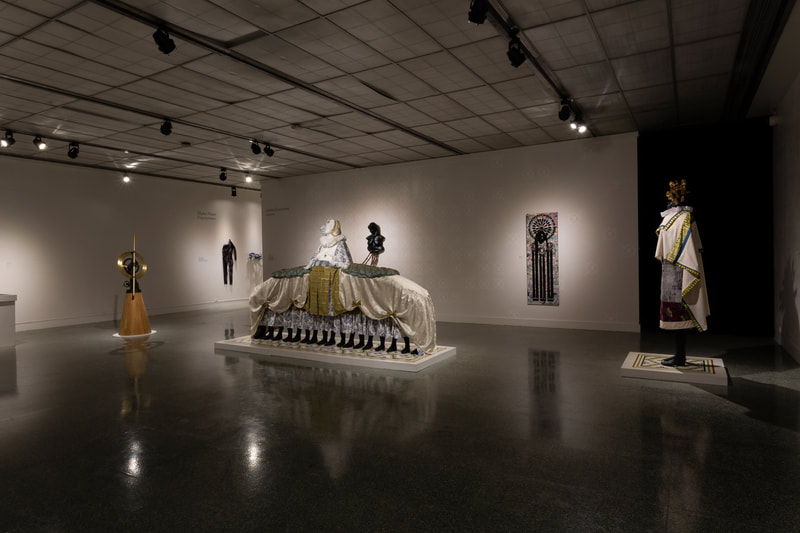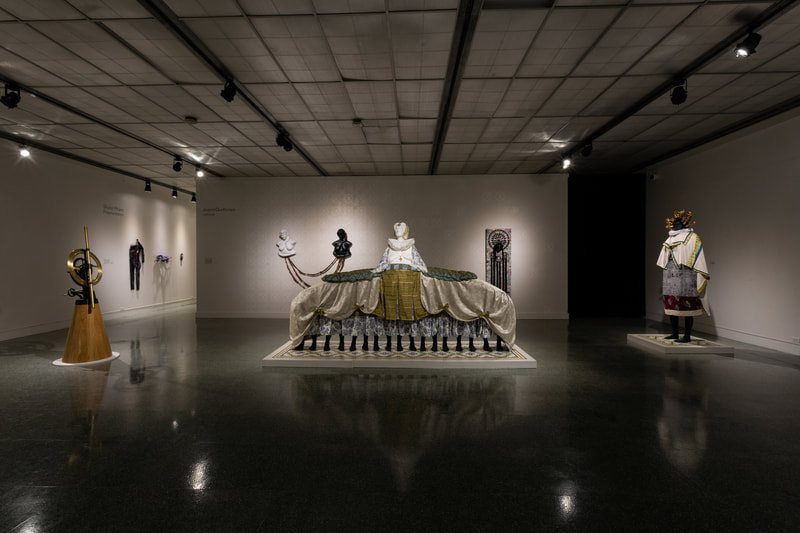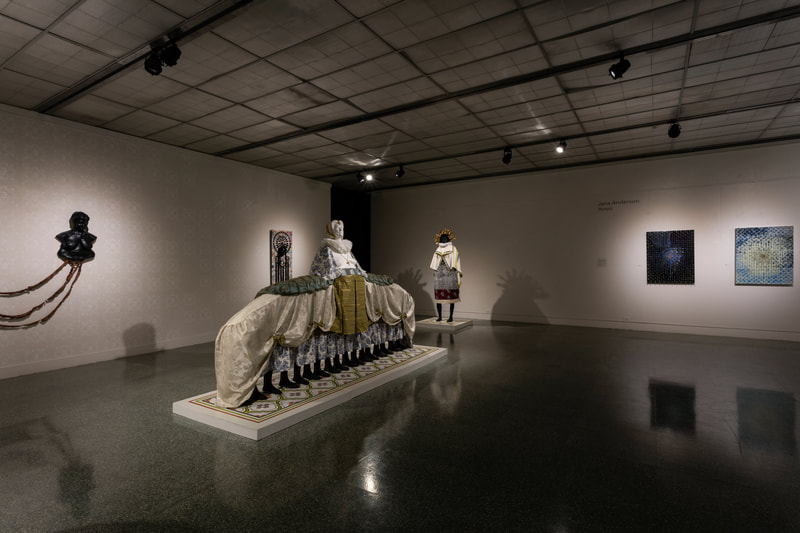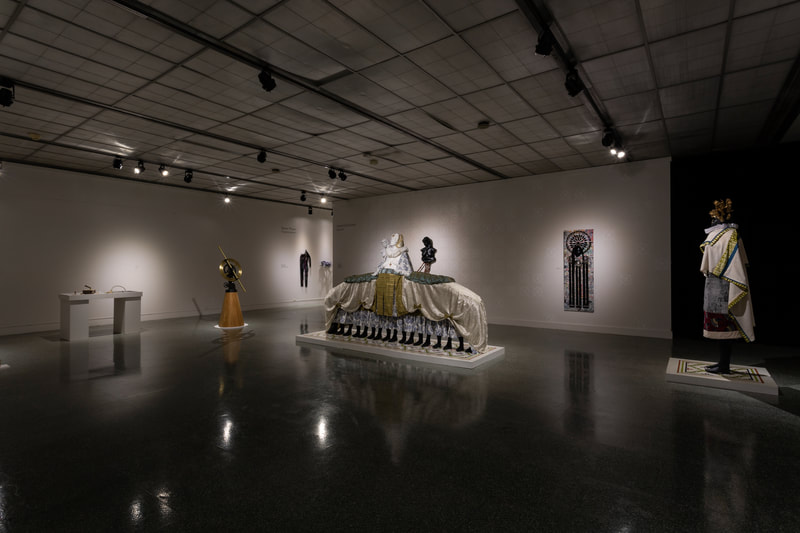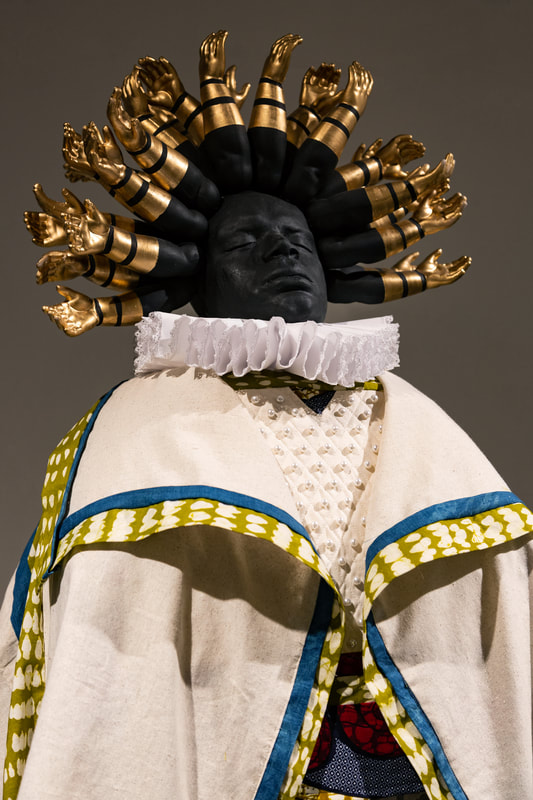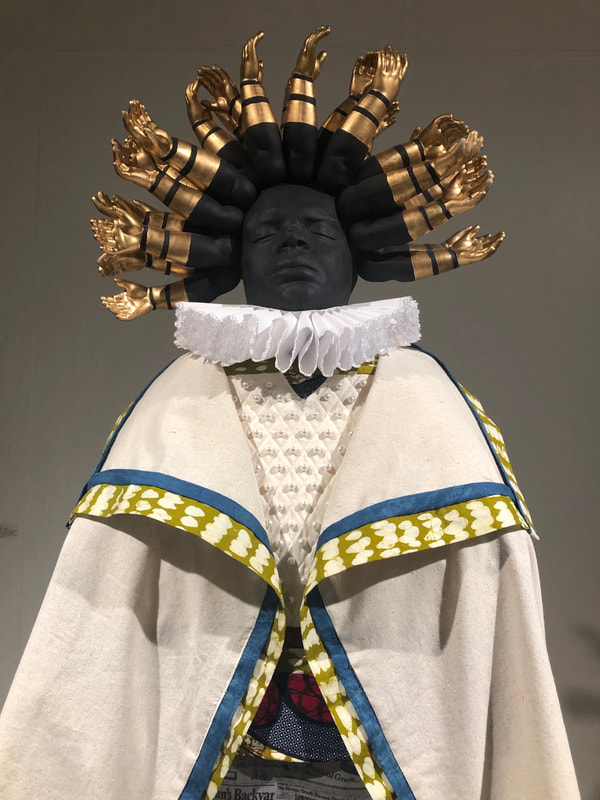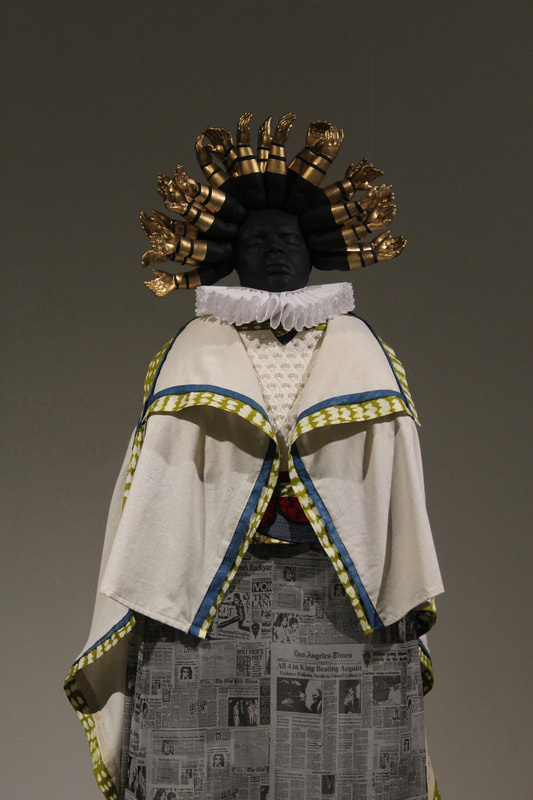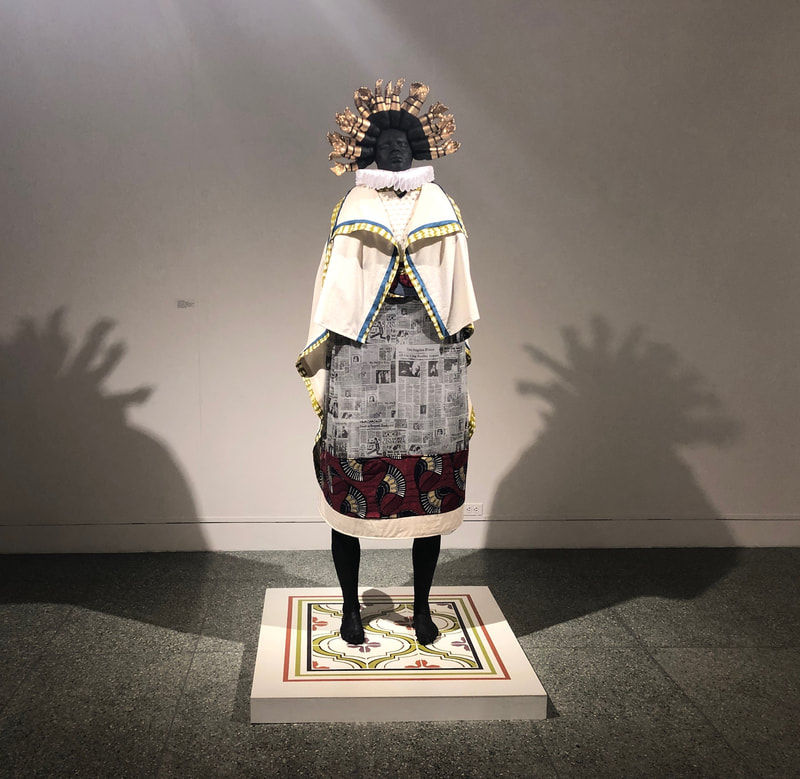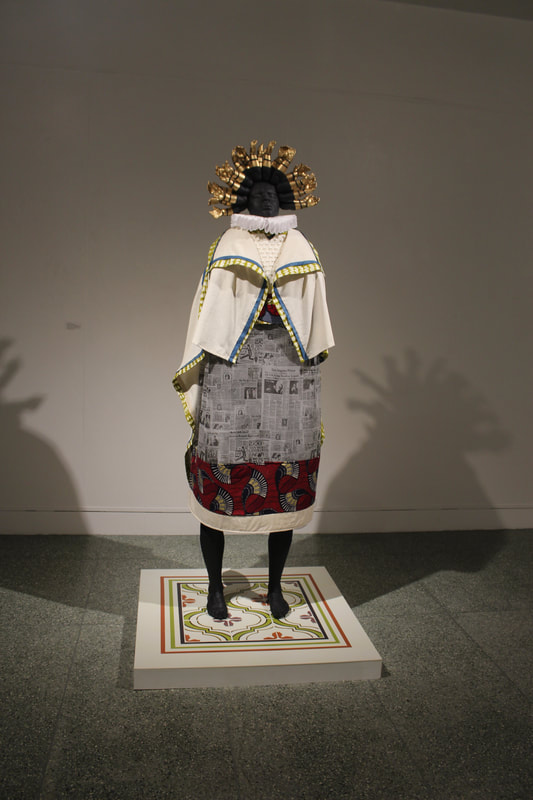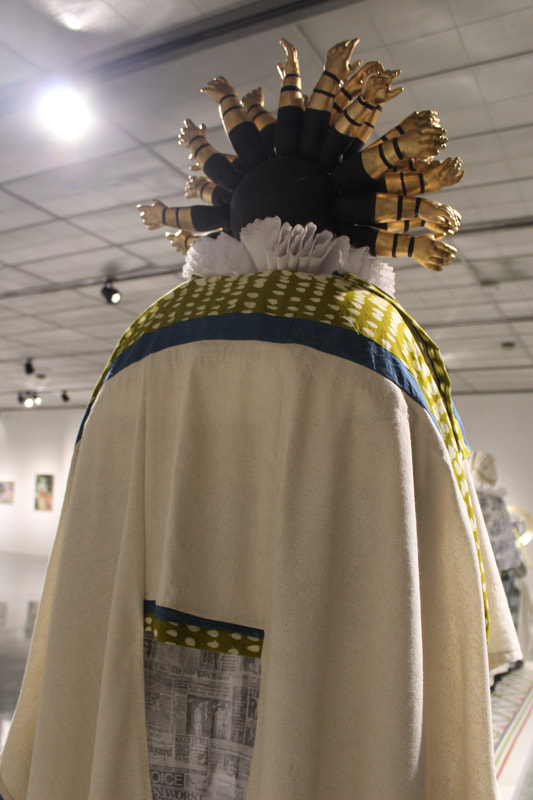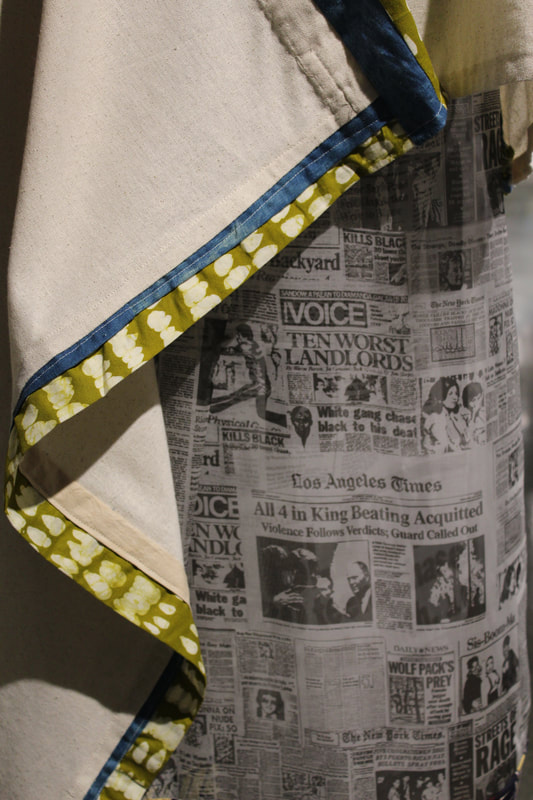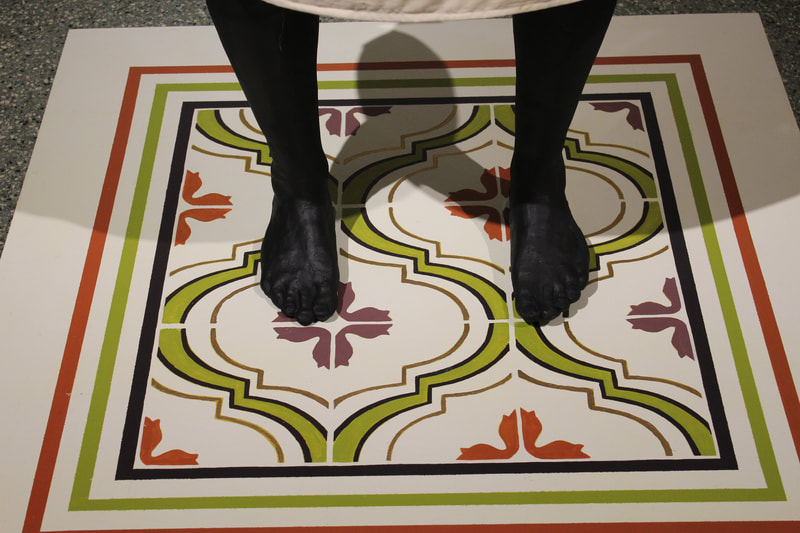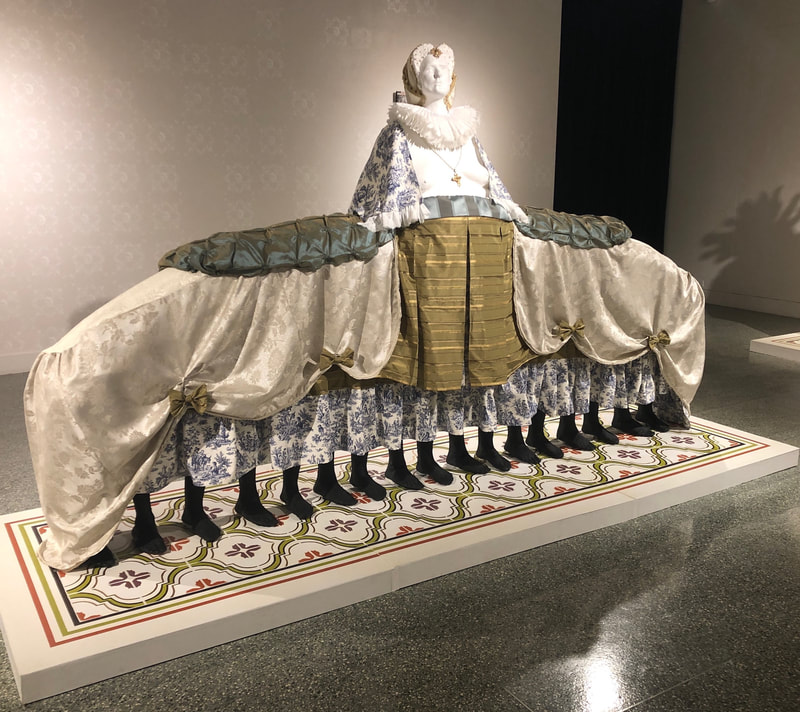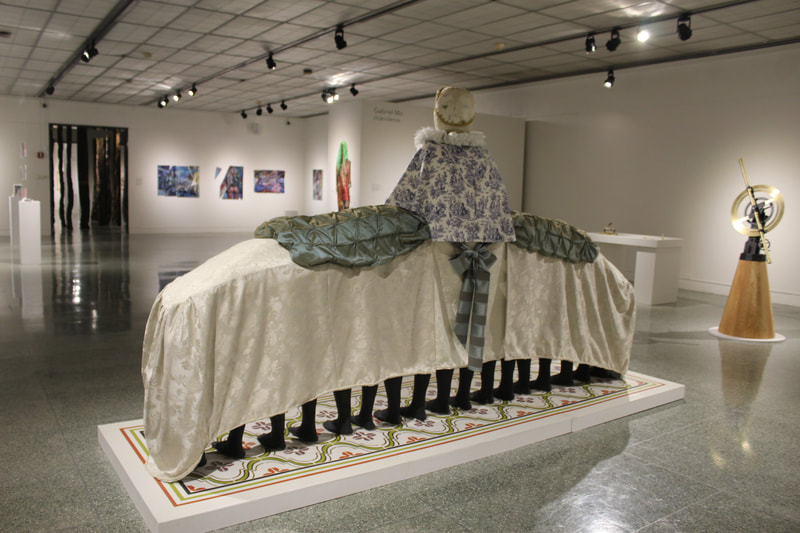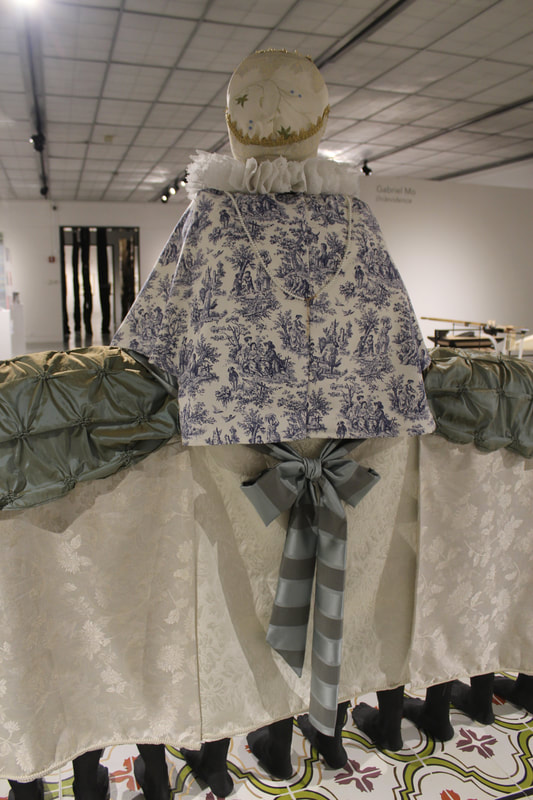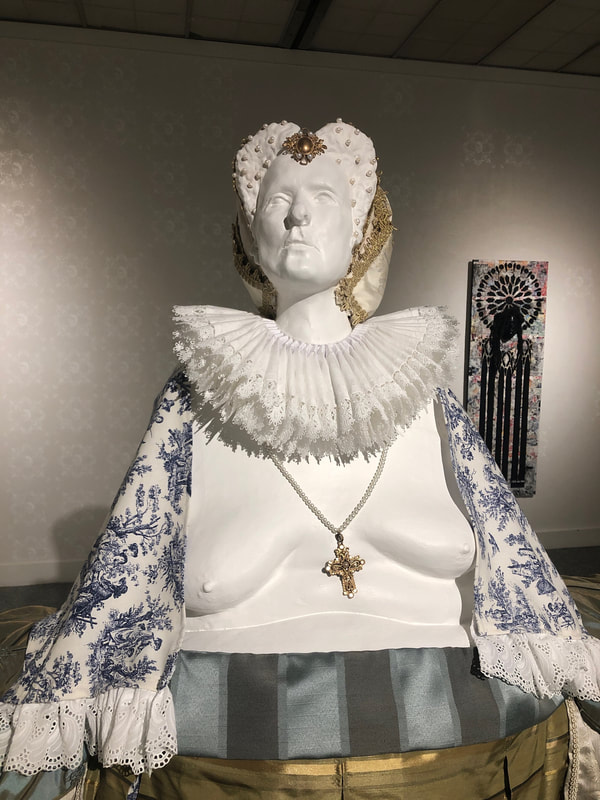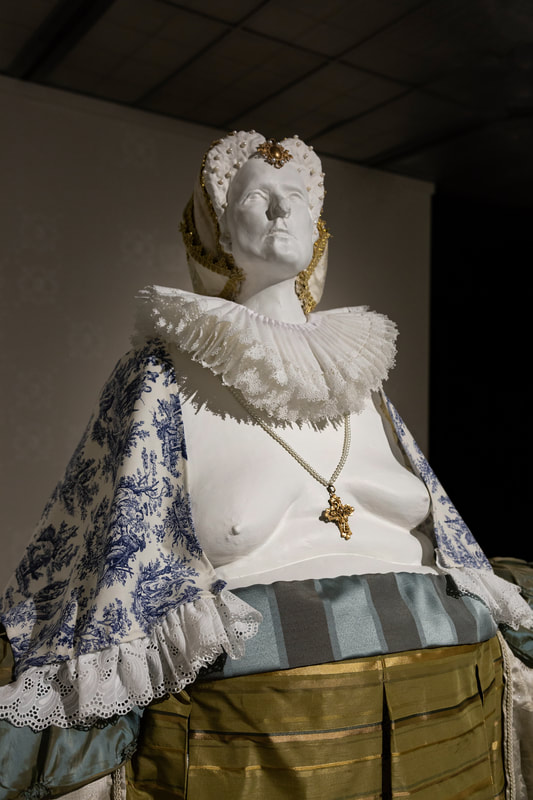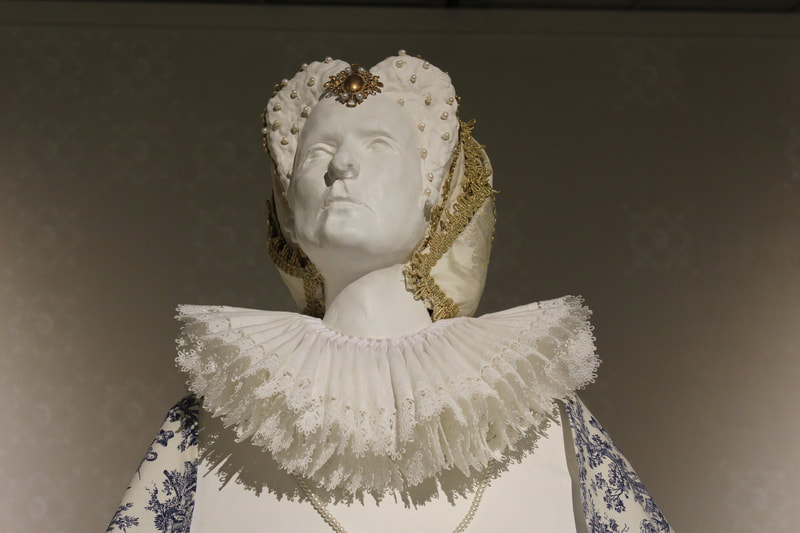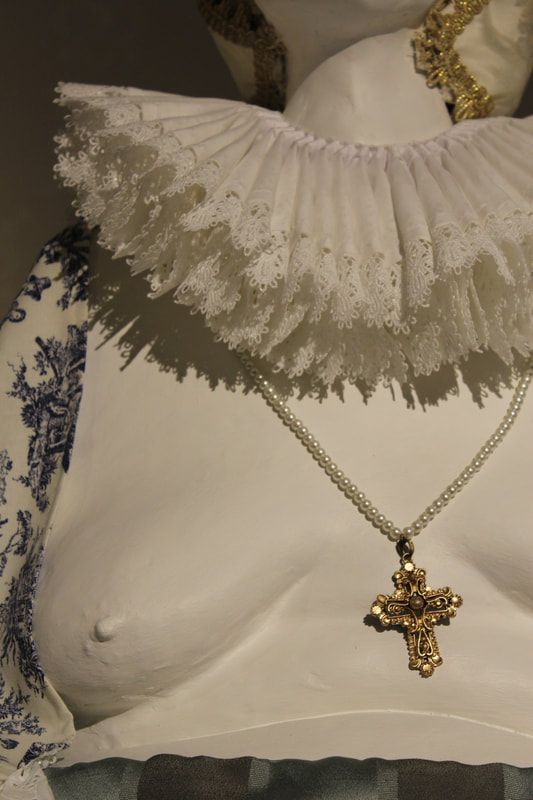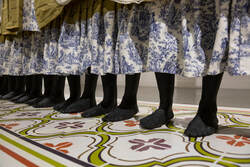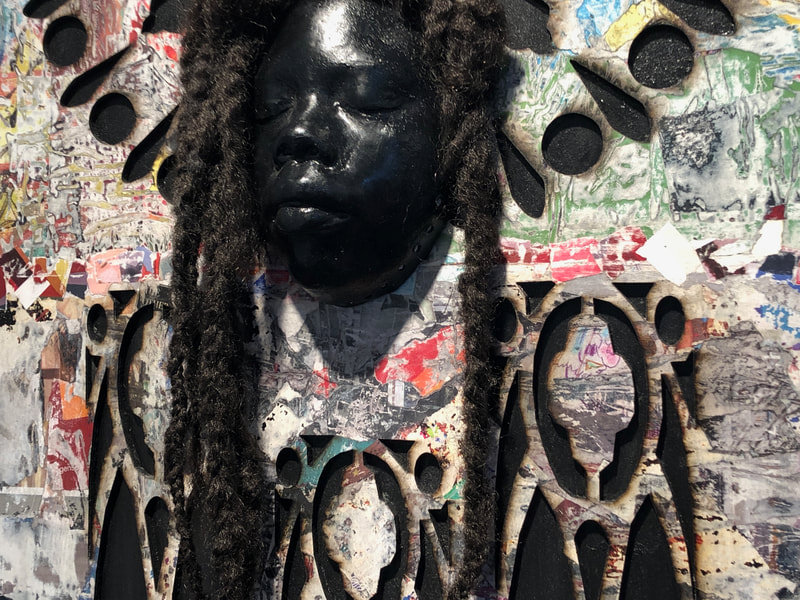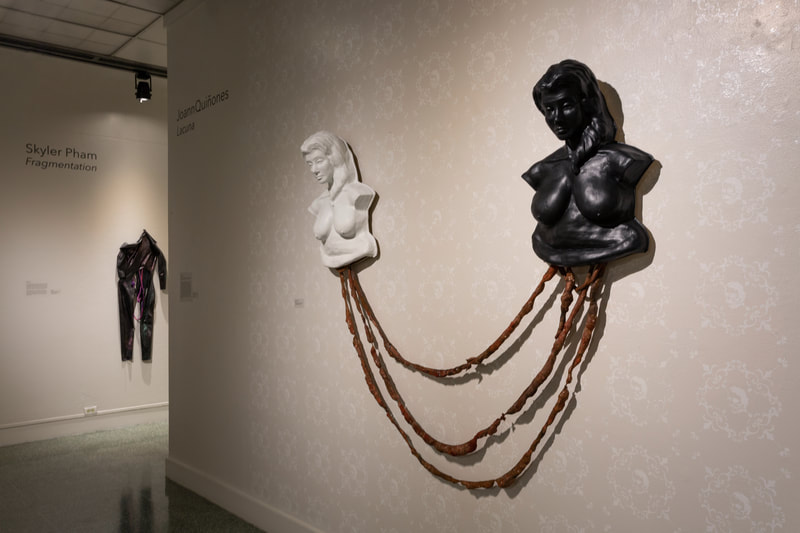Lacuna- an unfilled space or interval; a gap; a missing portion in a book, manuscript, text, or painting; a cavity or depression, especially in bone; if I heard this word in Spanish, the baby’s crib.
For this body of work, I use the figure of the Topsy Turvy doll as a starting point to explore the internal contradictions of a queer, Afro-Latinx identity. The figures here are both human and doll-like, oversized, imaginary, and stationary. They consist of hybrid forms and memories, carefully alluding to what it means to be both and neither – black, Puerto Rican, a citizen, a woman, and queer. In terms of process, I am drawn to mold making as an expression of the desire to fill in the blanks of my history. A mold creates a copy and an original. And ultimately, a casting is made when a liquid is poured into a cavity and left to harden. The result is an object that is solid on the surface and hollow on the inside, an apt metaphor for the impossible pursuit of charting identity. Mold making also allows for a seemingly endless repetition of form. I made casts, then molds of different individuals’ body parts, and then reassembled them all, much in the way doll makers would send cast doll legs, hands, and heads around the world to facilitate the mass production of dolls.
For this body of work, I use the figure of the Topsy Turvy doll as a starting point to explore the internal contradictions of a queer, Afro-Latinx identity. The figures here are both human and doll-like, oversized, imaginary, and stationary. They consist of hybrid forms and memories, carefully alluding to what it means to be both and neither – black, Puerto Rican, a citizen, a woman, and queer. In terms of process, I am drawn to mold making as an expression of the desire to fill in the blanks of my history. A mold creates a copy and an original. And ultimately, a casting is made when a liquid is poured into a cavity and left to harden. The result is an object that is solid on the surface and hollow on the inside, an apt metaphor for the impossible pursuit of charting identity. Mold making also allows for a seemingly endless repetition of form. I made casts, then molds of different individuals’ body parts, and then reassembled them all, much in the way doll makers would send cast doll legs, hands, and heads around the world to facilitate the mass production of dolls.
